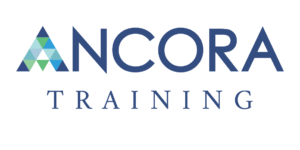Overwhelmed by the Occupational Safety and Health Administration (OSHA) Standards – Here’s What You Should Know About Complying with OSHA
Understanding of OSHA’s safety regulations can be overwhelming, but it’s important to know which standards apply to your industry and workplace. Doing so will allow you to create and maintain a safe work environment and stay compliant with OSHA’s relevant regulations.
What is OSHA?
In 1970, the Occupational Safety and Health Act was passed by Congress, which created the Occupational Safety and Health Administration, commonly referred to as OSHA. Under the Occupational Safety and Health Act, employers are responsible for providing a safe workplace for their employees. OSHA sets and enforces standards for employers to comply with specific health and safety regulations, including regular hazard safety training for employees.
OSHA is a federal agency, but it encourages states to create and maintain their health and safety programs, as long as they provide at least the same amount of protections as the federal agency. OSHA’s standards cover most private sector employees, but they don’t regulate the self-employed and family members working on family-owned farms. Federal employees aren’t covered by OSHA either, as they have agencies that follow federal health and safety regulations. Some public sector employees are protected by OSHA through state-level health and safety programs. In states without state OSHA programs, public employees may be protected through their state Department of Labor or another agency.
What Are OSHA Standards?
OSHA standards and regulations define the minimum level of protection for employees. These standards are divided into four main categories: agriculture, construction, maritime, and general industry. Some standards, known as general industry standards, apply to all industries. However, if there are more specific regulations for a particular industry, those standards trump general industry standards.
These requirements cover a wide variety of regulations and safety guidelines, and many industries have industry-specific guidelines. OSHA standards cover workplace safety issues such as:
- Infectious diseases
- Fall hazards
- Respiratory protection
- Equipment maintenance
- Machine hazards
- Hazardous substances
In addition to complying with OSHA regulations for industry-specific standards, the General Duty Clause of the OSH Act of 1970 states that all workplaces must be “free from recognized hazards that are causing or are likely to cause death or serious physical harm.”
How Are OSHA Standards Enforced?
In addition to developing safety standards, OSHA is tasked with the enforcement of these regulations. OSHA standards are enforced through inspections, which are typically performed when there is a death or significant injury in a workplace, a complaint, or at random. Random inspections are common in industries that are considered a high hazard (like OSHA standards for construction).
OSHA inspectors will ask permission from the employer before performing an inspection. If this permission isn’t granted, the inspector may be required to obtain a warrant. The inspector will request an employee representative to accompany them on their inspection. They’ll typically begin the inspection by discussing the procedure and what areas they’ll be inspecting with the employer and employee representative. The inspector will then begin their walk-through inspection, which includes looking at records and documentation, examining machinery, and conducting air-monitoring tests. After the inspection, the inspector will inform the employer and employee representative of their findings, including any fines or corrections that may need to be made.
What Are OSHA Training Standards?
OSHA also puts forth general and industry-specific training guidelines and required frequencies. These training standards are dependent on each industry. However, as a general rule, OSHA expects that employees have been trained on the tools, machines, and practices they use to do their job by a qualified instructor. These hazard safety trainings should be documented and repeated at whatever frequency is determined for safe operations.
General industry standards require initial and annual employee training on respiratory protection, hazardous waste, confined spaces, and other workplace safety topics. This means OSHA compliance trainings should be performed when an employee is hired and every 365 days afterward. Other training occurs periodically and are performed when an employee is exposed to a new hazard or procedure, or it’s suspected the initial or previous training wasn’t fully understood. Some states have the same OSHA training standards as the federal agency, while others adopt additional training requirements.
What’s The Difference Between OSHA 10 and OSHA 30?
OSHA’s Outreach Training program assists employers in meeting safety training standards. While they help employers with training their employees and improving their safety practices overall, these courses alone don’t meet OSHA compliance standards. Some states require either the OSHA 10-hour training or OSHA 30-hour training to be compliant. There are industry-specific OSHA 10 and OSHA 30 trainings in addition to the general industry trainings.
The OSHA 10 course provides a more introductory overview of these health and safety regulations, while the OSHA 30 course is intended for supervisors or employees with more safety oversight or responsibility. It covers similar material to the 10-hour course, but it goes much more in-depth.
Upon completing these courses, employees are provided with completion cards. These outreach courses help employers meet OSHA safety regulations, but employers are still required to supplement this program with additional safety training to comply with OSHA’s guidelines for their specific industry.
To learn more about Ancora Education’s Corporate Training Programs, contact us!
